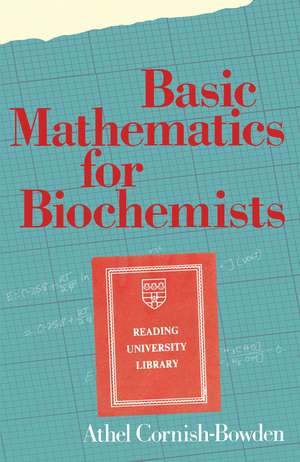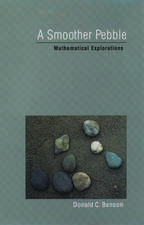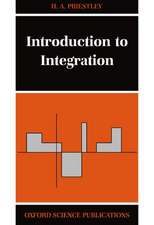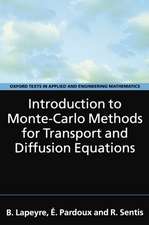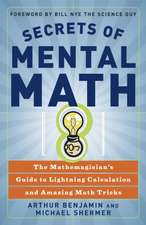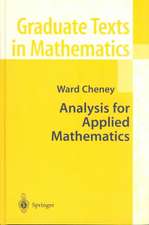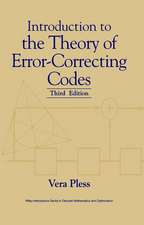Basic Mathematics for Biochemists
Autor A. Cornish-Bowdenen Limba Engleză Paperback – 3 sep 1981
Preț: 378.12 lei
Nou
Puncte Express: 567
Preț estimativ în valută:
72.36€ • 75.89$ • 60.23£
72.36€ • 75.89$ • 60.23£
Carte tipărită la comandă
Livrare economică 01-15 aprilie
Preluare comenzi: 021 569.72.76
Specificații
ISBN-13: 9780412230103
ISBN-10: 0412230100
Pagini: 138
Ilustrații: X, 138 p.
Dimensiuni: 140 x 216 x 8 mm
Greutate: 0.18 kg
Editura: SPRINGER NETHERLANDS
Colecția Springer
Locul publicării:Dordrecht, Netherlands
ISBN-10: 0412230100
Pagini: 138
Ilustrații: X, 138 p.
Dimensiuni: 140 x 216 x 8 mm
Greutate: 0.18 kg
Editura: SPRINGER NETHERLANDS
Colecția Springer
Locul publicării:Dordrecht, Netherlands
Public țintă
ResearchCuprins
1 The Language of Mathematics.- 1.1 Introduction.- 1.2 Priority rules for operators.- 1.3 The summation sign.- 1.4 Functions.- 1.5 Constants, variables and parameters.- 1.6 Dimensional analysis.- 1.7 Plotting graphs.- 1.8 Precision.- 1.9 Problems.- 2 Exponents and Logarithms.- 2.1 Integer powers.- 2.2 Fractional exponents.- 2.3 Addition and subtraction of exponents.- 2.4 Logarithms.- 2.5 Common logarithms.- 2.6 Negative numbers have no logarithms.- 2.7 Natural logarithms.- 2.8 Logarithms to base 2.- 2.9 Exponential decay.- 2.10 Logarithms as a method of scaling.- 2.11 Products of equilibrium constants.- 2.12 Logarithms of dimensioned quantities?.- 2.13 Redox potentials.- 2.14 Dependence of redox potentials on pH.- 2.15 Problems.- 3 Differential Calculus.- 3.1 Co-ordinate geometry.- 3.2 Slope of a curve.- 3.3 Rapid differentiation.- 3.4 Derivatives of sums and products.- 3.5 Derivative of a ‘function of a function’.- 3.6 Derivative of a ratio.- 3.7 Higher derivatives.- 3.8 Notation.- 3.9 Maxima and minima.- 3.10 A note on terminology.- 3.11 Points of inflexion.- 3.12 Sketching curves.- 3.13 Problems.- 4 Integral Calculus.- 4.1 Increases in area.- 4.2 Definite and indefinite integrals.- 4.3 Simple integrals.- 4.4 Integral of 1/x.- 4.5 Differential equations.- 4.6 Numerical integration: evaluating the area under a curve.- 4.7 Problems.- 5 Solving Equations.- 5.1 Linear equations in one unknown.- 5.2 Rearranging equations.- 5.3 Simultaneous linear equations.- 5.4 Determinants.- 5.5 Quadratic equations.- 5.6 Graphical solution of equations.- 5.7 Newton’s method.- 5.8 Approximate methods.- 5.9 Problems.- 6 Partial Differentiation.- 6.1 Meaning of a partial derivative.- 6.2 Exact and inexact differentials.- 6.3 Least-squares fitting of the Michaelis—Menten equation.-6.4 Problems.- Notes and Solutions to Problems.
